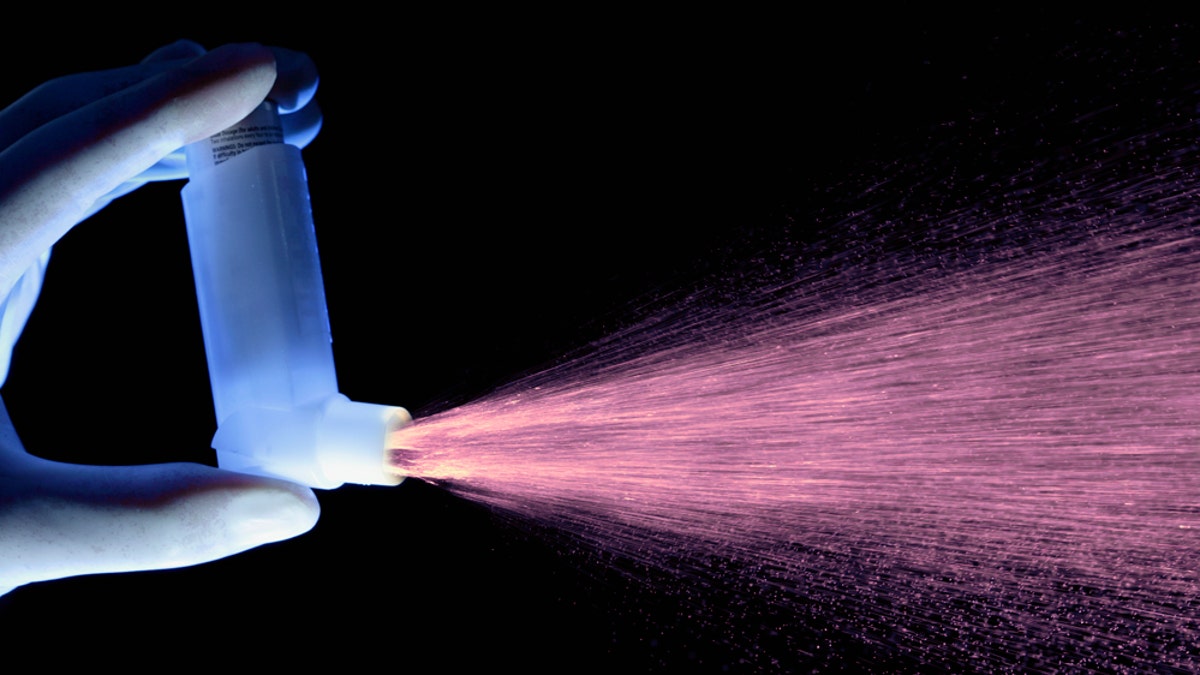
UNDATED: In this undated image an asthma inhaler is seen dispensing a dose of drug. A report released on May 3, 2005 to mark World Asthma Day claims that one person dies from asthma every hour in Western Europe. (Photo by Getty Images) (Getty)
Asthma isn’t always thought of as a condition that affects our aging population. It’s true that the condition is most prevalent among children in America compared to any other age group, but the disparity isn’t as large as one might think. According to the Centers for Disease Control and Prevention (CDC), about 9.3 percent of children have asthma compared to about 8 percent of adults. But that doesn’t mean asthma doesn’t pose serious health problems for that 8 percent— as well as other people who may be unaccounted for.
Most asthmatics are diagnosed as children or young adults, but asthma can strike at any time— even in your 70s or 80s. In fact, asthma may be more common in seniors than younger adults or children. That’s because it’s particularly difficult to diagnose in older people, and, as such, many seniors and baby boomers with asthma may not know they have it at all.
READ MORE: Asthma Gender Statistics By State
An often-missed diagnosis
Some factors, like longtime cigarette smoking or obesity, tend to complicate many bodily functions and can affect health in various negative ways. Aging falls squarely into this category. Just like tobacco use and obesity, growing older makes diagnosing and treating asthma more difficult.
“If you’re elderly, you have a lot of other things that are going on,” said Dr. Alan Mensch, pulmonologist and senior vice president of medical affairs at Plainview and Syosset Hospitals in New York. “It could be heart disease, COPD or bronchitis, but elderly people tend to have other diseases that asthma could be mistaken for.”
READ MORE: Asthma and Common Related Conditions
How asthma works differently in older adults
A missed diagnosis isn’t the only way asthma differs for older adults. Seniors experience specific challenges that people in other age groups don’t. “Even if your lung function is considered excellent for an 80-year-old, it’s still not as good as excellent lung function in a 50-year-old,” Mensch explains.
An asthma diagnosis means one thing for the affected lungs: The airways become inflamed and breathing becomes difficult. It usually happens in bursts, called exacerbations or attacks, which are brought on by triggers. Triggers are different for each asthmatic, but include common allergens like pollen or dust, smoke or even the act of exercising.
READ MORE: Staying Healthy With Exercise-Induced Asthma
In most cases an attack is treated with asthma inhalers or goes away on its own, and normal breathing is restored. Sometimes, however, an asthma attack requires a trip to the emergency room, and in some cases asthma attacks are fatal. In older adults, breathing is less likely to return to normal and respiratory failure is more common, according to the Asthma and Allergy Foundation of America.
Treatment and preparation
Asthma sufferers are often prescribed a steroid inhaler or pills for long-term control as well as a “rescue” inhaler with a drug such as albuterol to treat attacks when they occur. Sometimes during attacks, asthma sufferers use EpiPens, or self-injectable shots filled with the hormone epinephrine, which is commonly known as adrenaline. It’s not that older asthmatics need different treatments; it’s just that they may need more of each type of treatment.
READ MORE: How to Save on the Most Common Asthma Medications
They may also take longer to recover from attacks. “We’re talking about 70- or 80-year-old lungs that may not be as strong as younger lungs,” Mensch said. “They have less lung power, and other illnesses that may also interfere with healing.”
All asthmatics should take preventive medicines as directed and keep inhalers handy, but this is especially true for older adults. Since healing is tougher for older people, a good defense is to always be prepared for an attack. “The trick is learning very early on what your triggers are, and how to avoid them,” Mensch said.
